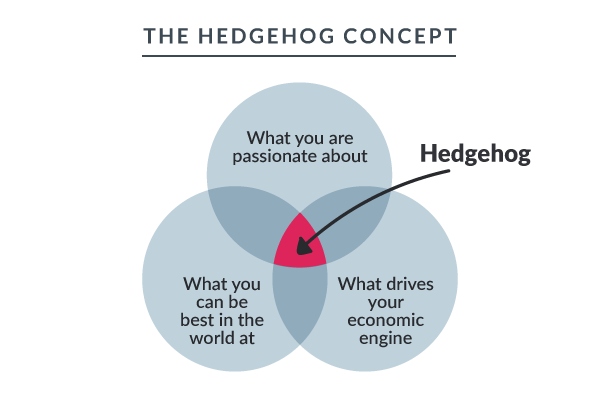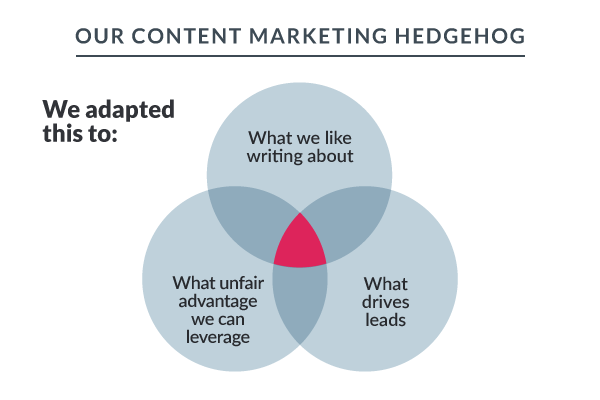“So, when is this content marketing thing supposed to kick in, exactly?”
As a marketer, you’ve likely heard about how great blogging and content marketing is for driving leads and results. So you dive right in: you work hard, brainstorming and writing article after article, hoping that it has some effect, that it’ll move some needle somewhere.
Content marketing can be hard. It takes time and you might make a lot of mistakes along the way.
The good news: You get to learn from those mistakes and improve your content and your strategies.
One of the key lessons I learned early on was the benefit of using frameworks to guide your content marketing strategy. I’d love to share my experience and strategies with you to give you a leg up in the content marketing game.

The 2,000% bump in traffic from using frameworks
At ReferralCandy, we’ve been running our blog for almost two years and have made plenty of content marketing mistakes.
We started off with no idea what we were doing, then we luckily stumbled onto a bunch of frameworks that changed everything. Our traffic grew 2,000% in that time, with our content getting featured in places like Forbes, The New York Times, and Business Insider.

The only way we got this chart to go up and to the right is because there are so many smart, generous folks on the internet sharing what they know.
I wanted to pay it forward by showing you four content marketing frameworks that helped put us on the path to growth.
1. The Spaghetti Blogging Framework

When you’re starting out, you might find yourself stuck on a number of blogging questions.
- What should I write about?
- What should this blog represent?
- How often should I be blogging?
- What is the perfect headline formula for this blogpost?
- What personas am I addressing?
And the list goes on!
And so, we came up with The Spaghetti Blogging Framework, which gets rid of all these questions and just makes it very simple:
Just throw stuff on the wall and see what sticks.
Get to work, get to writing, and improve as you go.
With a new blog, the most critical thing you can do is get into the habit of clicking “publish” and gaining visibility. Produce the best content you can at the time, and repeat. Don’t overthink it.
This idea of just shipping content is especially liberating for new startups and companies. When you blog liberally in the early stages, you release yourself from the burden of having to stay “on message” all the time, freeing yourself to get used to—and to fall in love with—the process of writing and sharing your content.
So how do you implement this? There’re two broad approaches you can take.
1. The first is to create content about anything and everything.
This was our approach. Our earlier content includes a post about SOPA, some random comics by our designers and a piece pondering whether Google had turned evil. As of writing, we’re a page 1 result for the query “why do white girls like starbucks.” It was a free for all.
This is like trying to find the perfect spaghetti recipe by adding anything into the mix: jelly beans, bananas, chocolate. You’re trading focus for speed: you will get lucky and add a smart ingredient like meatballs every now and then, but know that it’s mostly random.
2. The second is the approach we’d take if we could have a do-over.
It uses themes to guide your spaghetti throwing. Rather than just adding random ingredients every time, we might have tried out out candy-flavored spaghetti for a month, then if it wasn’t making any sense, try fruit-flavored spaghetti the next time.
So instead of just one isolated post about white girls and Starbucks, we could have written a few more pieces on other cultural stereotypes, then see how those performed.
2. The Skyscraper Technique

The Spaghetti Blogging Framework puts you in the right mindset to create an active, living blog. Once you get into the habit of writing, publishing and connecting with other content creators, you’ll eventually want to step up your game, building better content, and getting more traffic.
Enter The Skyscraper Technique.
Here’s how it works:
- Look for a piece of content in your niche that’s doing well.
- Add value to it in some way, whether that’s adding graphical treatment, adding new layers of information or writing a companion piece. Make sure to credit the original author.
- Reach out to everyone who shared the original and let them know about your spinoff.
Finding stellar content is easy. You can have this within a few minutes using Buzzsumo or simply by running a few web searches.
The second step is the crux of the technique: make something that really adds value to the original piece.
Think about the skyscraper analogy it’s named after: this will only work if the new content goes “higher” than the original. Creating a derivative work that doesn’t meet the bar of the original will likely fail to succeed the way you want.
See it in action: we saw this great post from Unbounce then put our designers to work in making it into a fun infographic on the ReferralCandy blog. (Interestingly, our version got twice the amount of tweets as the original.)
All credit for the Skyscraper Technique goes to Brian Dean, who explains it in greater depth here.
3. The Hedgehog Concept
If you’re already in the habit of publishing and have a smart process for producing share-worthy content, the Hedgehog Concept will help you get to the next level: becoming an authority in your niche.
The Hedgehog Concept is a framework from Jim Collins’ book, Good To Great. It’s a way for companies to zero in on what makes them unique in their marketplace and untouchable to competitors:

Content marketers can easily adapt this to figure out what makes their blog special. Here’s how we adapted the diagram:

This helped us enjoy what we were writing about while leveraging our strengths. It led to better team morale, which meant higher quality and quantity of output.
The Hedgehog Concept also ensures that you’re writing content that drives the business, as opposed to churning out high-traffic content that attracts the wrong audience.
Once you apply the concept, your content strategy instantly gets a lot smarter.
Pre-Hedgehog Concept, we would publish articles on topics with very weak links to our business, like why there should be more women in venture capital — popular and shared widely, but barely generates any leads. Post-Hedgehog, we now publish things like how a Kickstarter project secured 6-figure sales in less than a month. Still popular, but more relevant and much better at driving leads.
Figuring out your Hedgehog Concept isn’t easy and likely will require some debates and several arm wrestling matches within your team. But if your content strategy is stuck, it’s absolutely worth taking the time to step back and reassess your blog’s place in the market.
4. Tofu-Mofu-Bofu

Tofu-Mofu-Bofu is a simple but powerful framework that will help you drive conversions with your content.
It does so by making sure that you’ve got content that addresses every part of your marketing funnel, from the Top to the Middle to The Bottom.
Here’s how that plays out:
- Top of the Funnel = building awareness about you / the problem you address
- Middle of the Funnel = teaching people how to choose a solution
- Bottom of the Funnel = explaining why your product is the best solution
If you do a content audit of your blog, you may find that you’re completely ignoring at least one part of the funnel. That means you’re only speaking to certain segments and potentially missing out on huge swaths of potential customers.
- If your content is all Tofu, you’re doing a great service to people by educating and entertaining them, but it’s likely that you’re losing out on a lot of conversions downstream.
- If you’re all Mofu, then you’ve restricted yourself only to people who are aware of the problem you’re solving. Many blogs for tech startups are stuck here.
- If you’re all Bofu, be aware that your blog is essentially a digital brochure — great if your customers are all in the “selection” phase of their buying journey. If that’s not the case, it may be wise to diversify your content.
A critical step of putting Tofu-Mofu-Bofu to work is by having very well-developed customer personas. That way, you know where your most of your readers are in the funnel and can plan out your content calendar accordingly.
We learned this framework from the HubSpot blog, which happens to be an excellent example of a blog that has content for every step of the funnel.
You’ll also see the Tofu-Mofu-Bofu framework at play in our guide to referral marketing, which is one of the ways we’re making sure we’re hitting every part of the funnel.
Conclusion
Content marketing is largely a solved problem — it all comes down to execution and persistence.
Don’t get discouraged, don’t stress out, and keep at it. It’s a channel that rewards people who play the long game.
Have you found any other useful content marketing frameworks?
Let’s chat in the comments!
Image sources: ReferralCandy, The Noun Project, Blurgrounds, Get Refe
Try Buffer for free
190,000+ creators, small businesses, and marketers use Buffer to grow their audiences every month.

